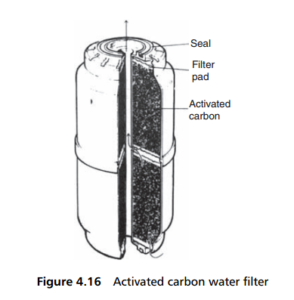0
-
An empty cart
You have no item in your shopping cart
envato-wordpress-toolkit domain was triggered too early. This is usually an indicator for some code in the plugin or theme running too early. Translations should be loaded at the init action or later. Please see Debugging in WordPress for more information. (This message was added in version 6.7.0.) in /var/www/wp-includes/functions.php on line 6121g5plus-darna domain was triggered too early. This is usually an indicator for some code in the plugin or theme running too early. Translations should be loaded at the init action or later. Please see Debugging in WordPress for more information. (This message was added in version 6.7.0.) in /var/www/wp-includes/functions.php on line 6121A packed bed of activated carbon, acting as an adsorbent, is a very good purification means for small to medium-sized water treatment systems. However, it is not suitable for removing suspended biological material. This can be done in an element that combines adsorption with biological activity.
This process combines the use of biological activated carbon with adsorption. The biodegradable organic matter, or biodegradable dissolved organic carbon, which enters with the raw water is transformed into carbon dioxide and biomass by heterotrophic bacteria fixed on the carbon. The biomass is then partially consumed by protozoa. An equilibrium is reached among the inflow of food, bacteria, protozoa and algae. This equilibrium must be carefully controlled in order to assure the quality of the processed water. The granular support and its operating parameters (filtration velocity, contact time and periodic washes) are the only variables that must be controlled to guarantee the optimum biological state of the system.
Figure 4.16 shows a typical chemical contaminant filter system designed for domestic installation. The adsorbent medium most commonly used in such filters is activated carbon. Granular activated carbon adsorption is an accepted method for removing chemical contaminants from drinking water, particularly at the point of use. However, to be effective the flowing water must be in contact with the carbon for a prescribed length of time. To ensure this, pressure regulation and flow control are necessary

Filter cartridges of activated carbon will contain small amounts of carbon fines. All cartridges should be flushed after installation to remove traces of such fines from the water system before use. Ultra-fine filtering can be combined with carbon
filtration to ensure maximum water clarity and maximum adsorptive properties.
There then remains the desirability of dealing with bacteria removed and held in the filter medium. The basic answer is to incorporate an insoluble, non-toxic sanitizing agent in the filter capable of destroying contained bacteria. The bactericide most commonly employed is silver impregnated into the carbon granules, as in Figure 4.17.